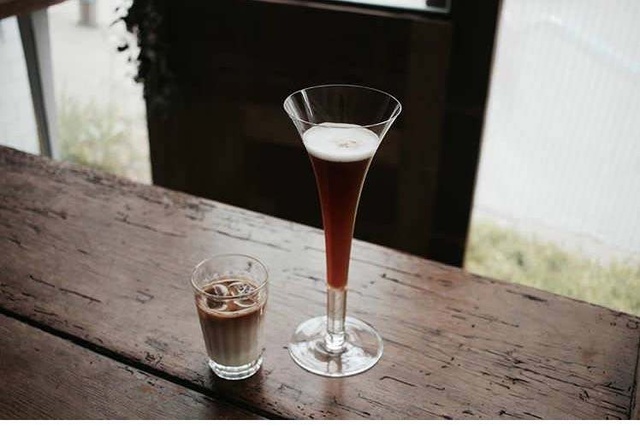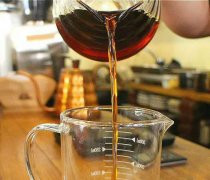What is the charm of individual coffee? How do you drink individual coffee from different ages?

Professional coffee knowledge exchange more coffee bean information please follow the coffee workshop (Wechat official account cafe_style)
Popular science | knowledge of coffee varieties, introduction of the types and tastes of individual coffee, price of single bean
The word "single cup of coffee" has different meanings in different times.
In the old days, individual coffee was synonymous with black coffee.
Black coffee, Black Coffee, just coffee, no milk, sugar, syrup and so on. The Cantonese word for "fasting coffee" and the "black coffee" among the noble women in Shanghai all make this interpretation.
Perhaps it is because the coffee in the old days was difficult to swallow without sugar and milk, so that the definition of individual coffee was extended. It was still a cup of black coffee when it was produced, and the guests were allowed to add it with sugar milk.
In this day and age, flannel filtration is more common, coffee is just coffee, it is difficult to find out where it comes from.
"Middle Times", individual coffee began to emphasize "taste", not necessarily "single".
At this stage, American coffee belongs to the major category of Italian coffee, while individual coffee is another category. The price of American coffee is lower than that of individual coffee.
Colombia, Brazil, Mantenin, Mamba, Blue Mountain (Blue Mountain flavor) and siphon pot are the hallmarks of this era.
IMG_1398
Some people say that at that time, the consensus in the industry was that Italian coffee was made of mixed beans, and of course, coffee made from mixed beans could not be called a "single product". However, the matching beans such as "Mamba", "Goba" and even "Gomba" were so popular that they were also classified as a single product. Therefore, I am afraid the above reasons cannot be established.
Does it feel that Italian coffee has a distinct fast food temperament and cannot be associated with "taste", so both price and classification should be distinguished from manual slow making?
At this point, the author makes a bold guess that espresso beans are often added to Robbosa beans, so subconsciously, practitioners will distinguish them from individual coffees. after all, Arabica beans, which are used to make individual coffee, must be more superior.
In the new era, individual coffee is more clear and accurate.
It is different from unified beans, producing area beans, and matching beans. Focus on the flavor of the origin.
At present, the largest range of "single products" is a single manor or cooperative. Some large estates are divided into many plots, which give rise to a single site, or even small batches, and so on. Encouraged by various raw bean competitions and policies, coffee farmers spare no effort to grow and deal with them as if they were groups of independent experiments.
In this way, all kinds of "individual products" are a bit shirtless. It not only emphasizes the significance of "single", but also has more pertinence. Geology, year and climate, varieties, planting methods and treatment methods can all be compared and discussed.
At this time, individual coffee, called "Single Origin" in English, is even more flesh and blood. It refers to the general unity of planting environment and mode, and a single way of treatment.
Some people translate "Single Origin" into "single producing area", which is too wide and inappropriate. After all, the size of many producing areas is the same as that of provincial-level administrative regions.
It has been suggested that many manors still grow many varieties. For example, the Panamanian butterfly is made up of Rosa, Kaddura and Kaduai. Can it be regarded as a single product?.
It is also reasonable to regard a single item as a "single variety", but such a definition may be a bit harsh. For example, beans in Ethiopia, as the birthplace of coffee, are rich in genes, so it is difficult to separate varieties one by one, so they are labeled as original species, while the original species are mixed species.
The author believes that it is enough to interpret a single product as a "single source". As for the area range, altitude range, particle size, harvest time, treatment, etc., it will not affect the "consistency" (the definition of consistency in the cup meter). There's no problem. The scope is so narrow that it seems a bit of a pain in the neck.
From my experience of buying raw beans, most of the bourbon species, rose summer seeds, tin card seeds, Pacamara species, laboratory varieties and so on will be planted alone. The planting variety has a lot to do with the geographical conditions, and it is more due to the influence of altitude. And we often see mixed varieties planting, there will be some relatively fixed combinations.
(1) Kaddura, Kaduai (Honduras, Panama and other Central American countries are more common)
(2) Castius, Kaddura, Kaduai (most common in Colombia)
(3) SL28, SL39 (Kenya)
(4) Pacas, Bourbon (most common in El Salvador)
The significance of mixed species, some for the unique flavor, the participating manors common mixed species; some for planting ecology, tall tree species for dwarf shade, and so on.
IMG_1401
If there is no limit to the way individual coffee is made, foreigners have bluntly derived the following series of terms for Single Origin+ production methods (utensils)
1 single Source Italian (Single Origin Espresso/SOE)
2 single source Philharmonic pressure (Single Origin AeroPress)
3 single source hand flush (Single Origin Pour-over / Single Origin V60 / Single Origin Chemex)
……
Of course, they prefer to simply divide it into Single Origin Espresso (Italian) and Single Origin Filter (filter).
The article is reproduced from the coffee.
.
Important Notice :
前街咖啡 FrontStreet Coffee has moved to new addredd:
FrontStreet Coffee Address: 315,Donghua East Road,GuangZhou
Tel:020 38364473
- Prev

Quickly find the coffee beans that are suitable for you-an introduction to the types of coffee that are popular in coffee shops.
Professional coffee knowledge exchange more coffee bean information please follow the coffee workshop (Wechat official account cafe_style) popular science | Coffee variety knowledge, individual coffee type and taste introduction, single bean price self-baked coffee beans are numerous, common are coffee beans named after producing countries or regions, such as Ethiopia, Manning, etc., as well as special beans with beautiful names.
- Next

How to taste a cup of coffee? How to drink a single cup of coffee to look more professional?
Professional coffee knowledge exchange more coffee bean information please follow the coffee workshop (Wechat official account cafe_style) popular science | Coffee variety knowledge, individual coffee type and taste introduction, single bean price tasting single coffee is really a knowledge, but also a very experience of coffee flavor and taste, can be roughly divided into five kinds: sour, sweet, bitter, concentration, aroma. At first
Related
- Detailed explanation of Jadeite planting Land in Panamanian Jadeite Manor introduction to the grading system of Jadeite competitive bidding, Red bid, Green bid and Rose Summer
- Story of Coffee planting in Brenka region of Costa Rica Stonehenge Manor anaerobic heavy honey treatment of flavor mouth
- What's on the barrel of Blue Mountain Coffee beans?
- Can American coffee also pull flowers? How to use hot American style to pull out a good-looking pattern?
- Can you make a cold extract with coffee beans? What is the right proportion for cold-extracted coffee formula?
- Indonesian PWN Gold Mandrine Coffee Origin Features Flavor How to Chong? Mandolin coffee is American.
- A brief introduction to the flavor characteristics of Brazilian yellow bourbon coffee beans
- What is the effect of different water quality on the flavor of cold-extracted coffee? What kind of water is best for brewing coffee?
- Why do you think of Rose Summer whenever you mention Panamanian coffee?
- Introduction to the characteristics of authentic blue mountain coffee bean producing areas? What is the CIB Coffee Authority in Jamaica?

